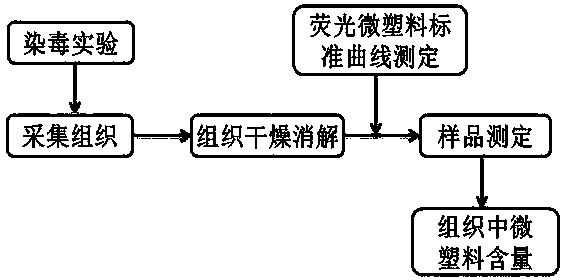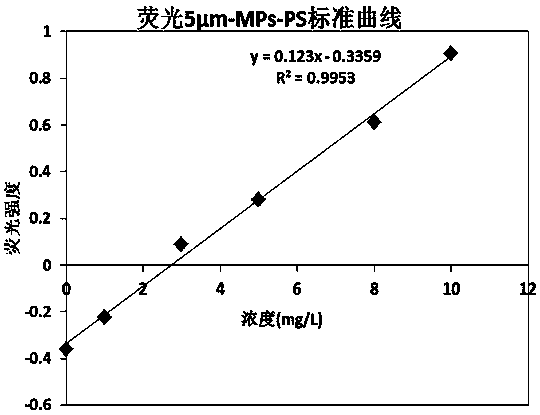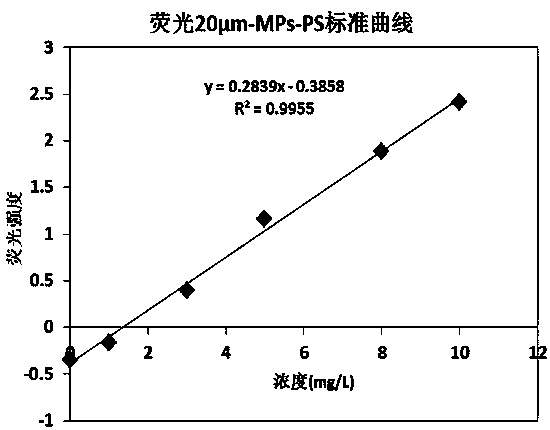A method for quantitative analysis of the enrichment and distribution of microplastics in aquatic organisms
An aquatic biological and quantitative analysis technology, which is applied in the field of quantitative detection of microplastic particles based on fluorescence tracer technology, can solve the problems of inability to accurately analyze the enrichment and distribution of MPs, and achieve effective quantitative detection, simple equipment and good repeatability. Effect
- Summary
- Abstract
- Description
- Claims
- Application Information
AI Technical Summary
Problems solved by technology
Method used
Image
Examples
Embodiment
[0038] The experiment for quantitatively analyzing the enrichment and distribution of microplastics in aquatic organisms includes the following steps.
[0039] (1) Exposure experiment: Fluorescently labeled microplastic polystyrene particles (MPs-PS) were used as the test object, and the test animals were mature and healthy zebrafish ( Danio rerio , 5 months old, 0.29 ± 0.02 g), were randomly divided into the exposure group and the control group, each group contained 3 parallels, each parallel used 5 fish, and the exposure period was 7 days. The control group used deionized water, the exposure group used 5 μm and 20 μm fluorescent MPs-PS (5 μm-MPs-PS, 20 μm-MPs-PS, excitation wavelength 418nm, emission wavelength 518nm), and the same deionized water as the control group Prepare 20mg / L MPs-PS system. Other experimental conditions are as follows: temperature: 24 ± 1°C, pH: 7.2 ± 0.5, dissolved oxygen: 6.6 ± 0.3 mg / L, conductivity: 0.256 ± 0.005 mS / cm, hardness: 185 ± 9 mg / L Ca...
PUM
| Property | Measurement | Unit |
|---|---|---|
| particle diameter | aaaaa | aaaaa |
Abstract
Description
Claims
Application Information
 Login to View More
Login to View More - R&D
- Intellectual Property
- Life Sciences
- Materials
- Tech Scout
- Unparalleled Data Quality
- Higher Quality Content
- 60% Fewer Hallucinations
Browse by: Latest US Patents, China's latest patents, Technical Efficacy Thesaurus, Application Domain, Technology Topic, Popular Technical Reports.
© 2025 PatSnap. All rights reserved.Legal|Privacy policy|Modern Slavery Act Transparency Statement|Sitemap|About US| Contact US: help@patsnap.com



